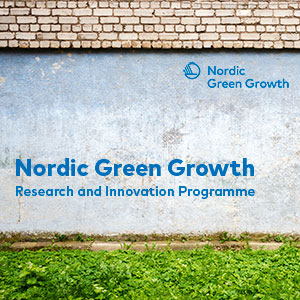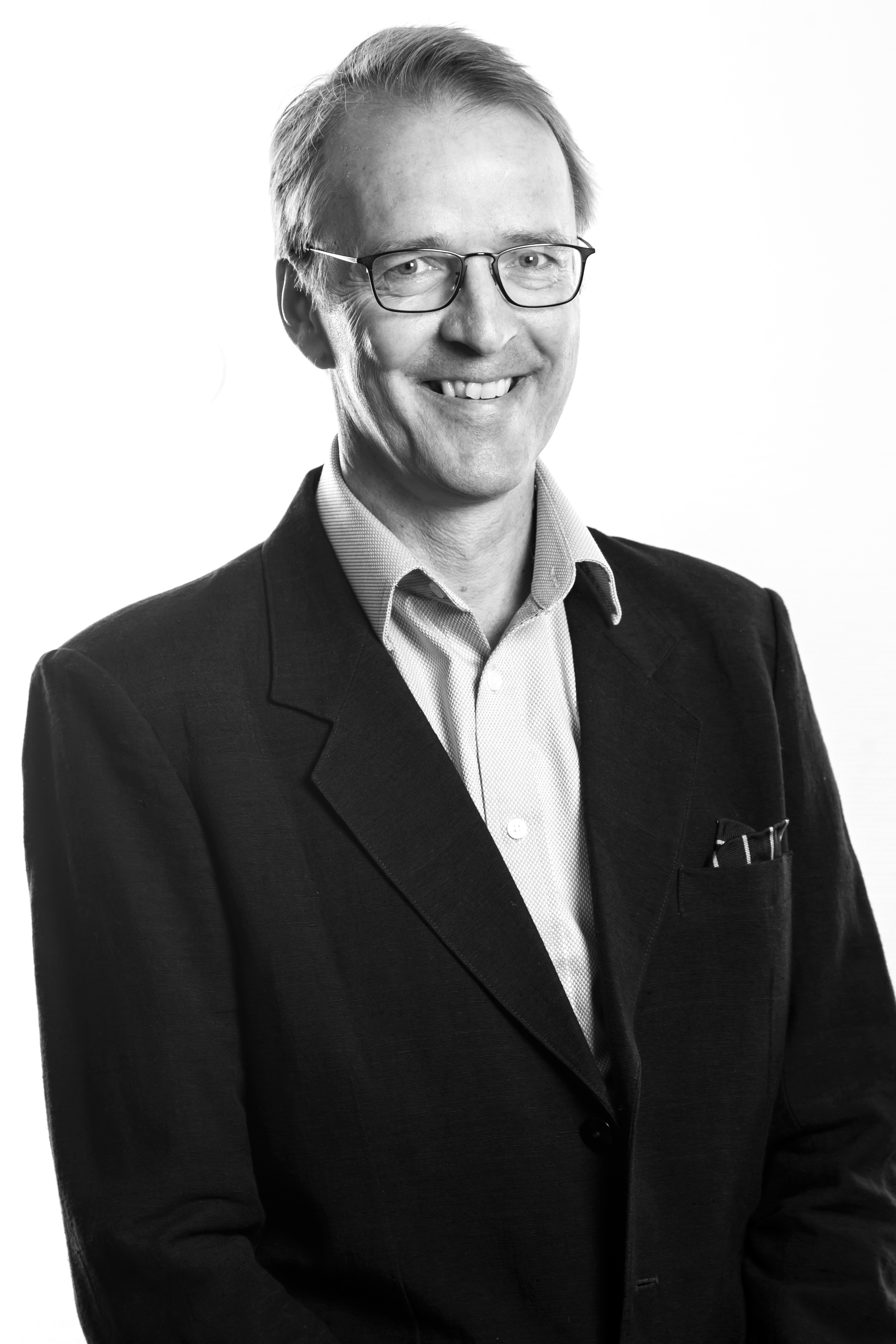
Nordic Green Growth Research and Innovation
The Nordic countries have ambitious climate goals towards 2050. These projects aim to promote green economic growth, sustainability and competitiveness
The Nordic countries have committed themselves to ambitious climate goals towards 2050 in terms of developing energy efficient and low-carbon societies. To achieve these goals, we need extensive green transitions in all areas of the Nordic societies and economies. We need to promote green economic growth, sustainability and competitiveness both in the public and private sector.
The Nordic countries are home to excellent research and consistently rank among the best when it comes to innovation. This makes the region well-positioned to develop innovative solutions and policy advice to meet the opportunities and challenges of reaching the Nordic climate goals.
NordForsk, Nordic Innovation and Nordic Energy Research, the main financiers of cooperative research and innovation in the Nordic countries, have therefore together launched this research and innovation programme. The call received tremendous interest with 113 applications in total.
Due to the wide scope of the call, the reviewers have considered applications covering a very wide range: Solar energy, wind energy, bio-refining, efficient use of resources from food production, mining, low-carbon approaches to metallurgy, integrated and lean production methods, innovative ways to use biomass resources both for materials and societal changes to enable green growth and competitiveness in Nordic countries to name a few. We were unfortunately only able to support a fraction of all these high-quality projects.
The total budget for the programme is 78 MNOK.
See summaries of the six funded projects below.
High-value Products from Lignin
Using lignin as an alternate renewable material source.
Lignin is a side stream component that is available in large quantities from industrial wood refining processes. The objective of the project is to develop technologies to use lignin as an alternative renewable material source in selected high value applications, optimally aiming at reduced production costs while simultaneously improved material properties.
Various types of lignins will be studied as raw materials. In addition to chemical modifications, physical methods will be developed and applied to induce desired properties, such as surface superhydrophobicity. Three potential end uses are envisaged:
Multifunctional metal coatings: Lignin-containing metal coatings aim at protection against biofouling, water frictional resistance, corrosion and icing in demanding environments, such as marine applications.
Ultra-pure biogas: Regenerable adsorbent materials with high adsorption capacity and efficiency based on metal-lignin composites will enable the use of biogas e.g. for fuel cell power plants that have strict purity requirements.
Functional films: Biomedical applications require materials with anti-microbial, cell friendly, biodegradable and biocompatible properties that can be produced in film form. Similar materials can be used for edible food packages. Lignin will be studied as a functional component in such applications.
Despite of this wide range of studied applications, many of the them have similar material property requirements and thus a generic lignin modification study will be performed that serves the whole project.
Project partners:
- Project lead: Tarja Tamminen, VTT, Finland
- Orlando Rojas, Aalto University, Finland
- Anders Feilberg Aarhus University, Denmark
- Gunnar Henriksson, Royal Institute of Technology, Sweden
New Nordic Ways to Green Growth (NOWAGG)
Strengthening the foundation for technological green growth innovation policy.
How to upscale and finance innovative low-carbon and resource-efficient technologies is essential to green growth. Nordic countries are early adopters of novel environmental technologies, and as such serving as a unique laboratory.
This research project will improve the basic understanding needed for policy-making related to promote technological green growth innovations. New types of cooperation between private and public actors could be a key enabler. The project will aim to identify key bottlenecks and options for improvement in existing governance arrangements. The availability of venture capital is essential for investments in new technologies. Reducing risk will be illustrated by experiences from a range of case studies of recent Nordic environmental technologies.
Green growth may offer an opportunity for otherwise disadvantaged regions to revitalise their trades and industries by switching to more low-carbon bio-based resources, creating a potential for offering novel, high-value commodities.
The output from this project can be used in both the Nordic countries and globally to promote green growth. Experiences from Nordic countries are much needed for a timely de-carbonisation internationally.
Project partners:
- Project lead: Mikael Skou Andersen, Aarhus University, Denmark
- Annica Kronsell, Lund University, Sweden
- Jon Birger Skjærseth, Fridtjof Nansen Institute, Norway
- Patrick Søderholm, Luleå University of Technology, Sweden
- Tuula Teräväinen-Litardo, University of Eastern Finland, Finland
Where Does the Green Economy Grow? The Geography of Nordic Sustainability Transitions
Investigating the conditions for green growth.
There is no one-size-fits-all approach to greening the growth path of an economy as this depends on place-based policy and institutional settings, level of development, resource endowments and particular environmental pressure points. This research proposal addresses the place-based, context-dependent nature of the shift to green growth in the Nordic countries by asking the question: where does the green economy grow? In addressing this question, we foreground the importance of innovation, new industry formation, and radical industry transformation.
The project is based on a mixed methods approach. Quantitative techniques will be applied to analyse the importance of human capital and technological specialisation for the greening of the economy. Qualitative case studies of Nordic regions will focus on the role of institutions and account for the diversity in Nordic regional green pathways.
Participating regions will benefit from a thorough analysis of current green growth processes and the opportunities for further greening. The project in particular seeks to engage pioneering green growth regions in the case study analysis, and a full work package in the project will be focusing on the possibilities for policy-learning between participating regions. An important element here will be to distinguish between those successful practices that can be transferred between regions, and those which are context dependent.
Project partners:
- Project lead: Teis Hansen, Lund University, Sweden
- Christian R. Østergaard Aalborg University, Denmark
- Markku Sotarauta, University of Tampere, Finland
- Antje Klitkou, NIFU, Norway
- Håkon Finne, SINTEF, Norway
- Anne Nygaard Tanner, Lund University, Sweden
CIRCit – Circular Economy Integration in the Nordic Industry for Enhanced Sustainability and Competitiveness
Exploring the Nordic circular economy potential.
Circular economy (CE) is a promising approach towards maximising value by increasing resource productivity, enhancing energy efficiency, lowering resource consumption and decreasing waste. By transitioning to CE, Nordic industry as a whole can pave the way for modern sustainability thinking and establish itself as benchmark in the field, whilst also enhancing its position in the highly competitive international market.
The CIRCit research project will develop science-based tools and approaches, in close collaboration with companies, with the aim of enabling Nordic industry to:
- Understand the overall potential for CE implementation.
- Investigate and conceptualise circular business models.
- Develop circular products, services and solutions, based on multiple life cycles and energy efficiency.
- Support the operation of circular products, services and solutions by introducing intelligent assets.
- Close the loop of materials through remanufacturing, recycling and reuse.
The tools and approaches developed in CIRCit will be broadly disseminated within the Nordic industry to maximise impact and uptake. CIRCit will contribute to increased efficiency of production and a more effective use of natural resources and energy, leading to increased competitiveness, growth and job creation.
Project partners:
- Project lead: Tim C. McAloone, Technical University of Denmark (DTU) Denmark
- Anna-Karin Jörnbrink, Swerea, Sweden
- Pekka Abrahamson, NTNU, Norway
- Sigurdur Kridtjansdottir, Innovation Center Iceland, Iceland
- Carina Wiik, Federation of Technology Industries in Finland, Finland
Feather2Feed
Developing a way to use feather as an alternative source of feed.
The challenge addressed by the project is the implementation of improved circular bioeconomy in the global chicken industry. With an increasing world population and mean income, there is a growing demand for proteins from meat. Alternative sources for feed ingredients are needed, preferably derived from by-products from local sources using mild processing conditions. Feather waste, a globally abundant by-product-derived nutritional protein-rich feed source, is an excellent choice.
The final goal of Feather2Feed is to present a market ready technology, where a colourless feather hydrolysate of high digestibility and nutritional value, is ready for industrial scale production at the end of the project period. This is achieved by using a new and radical combination of technologies.
The project will represent a stellar example of collaboration between Nordic SMEs and a state/private research institution, with representation from Norway, Sweden and Denmark. Since the technology in question has applications both in the Nordic countries and globally, given the size of the poultry industry and potential access to other protein rich side streams, the project will be a showcase of innovative Nordic technology solving a global waste problem and satisfying a need for improved protein rich animal feeds.
The added value on a practical basis will be the creation of employment and growth opportunities in the Nordic region related to the roll-out of the technology, but also across the globe as most growth opportunities will be export orientated.
Project leader:
- Nofima, Norway
Low Temperature Plasma for Chemical Production
A new way to extract high-value chemicals from lignin.
The project will use low temperature plasma to utilise valuable chemicals from low value bio-based feeds. Lignin is a waste material from wood processes when cellulose and hemicellulose have been extracted. Lignin is a very large molecule that contains interesting chemical structures and aromatics.
The project consortium aims to develop a process, based on low temperature plasma that will be able to decompose lignin into valuable chemicals, which can enable a production of bio-based chemicals at a price level that is comparable to today’s cost. The consortium will also focus on utilising possible waste from this process to produce synthesis gas (hydrogen and carbon monoxide) which also is a valuable feedstock for production of chemicals, and to examine if the technology can be used on black liquor.
The application is focusing on using a resource that is present in large quantities in the Nordic countries. If successful, the project may be able to increase the value string for companies operating in this region – forestry, paper mills, and chemical companies that will be able to produce competitive bio-based chemicals. The technologies involving bio-based chemicals have a strong foundation in these countries being in the forefront of the development of bio technologies replacing traditional feedstocks typically based on crude oil and other fossil fuels.
There is also a large export potential as lignin and bio-based chemicals is not solely related to the Nordic countries. There is a demand for these chemicals in other parts of the world and the demand is increasing as new technologies make it possible to develop alternative production routes.
Project partners:
- University of Uppsala, Sweden
- Haldor Topsøe, Denmark
- Perstrop AB, Sweden
- N2 Applied, Norway

